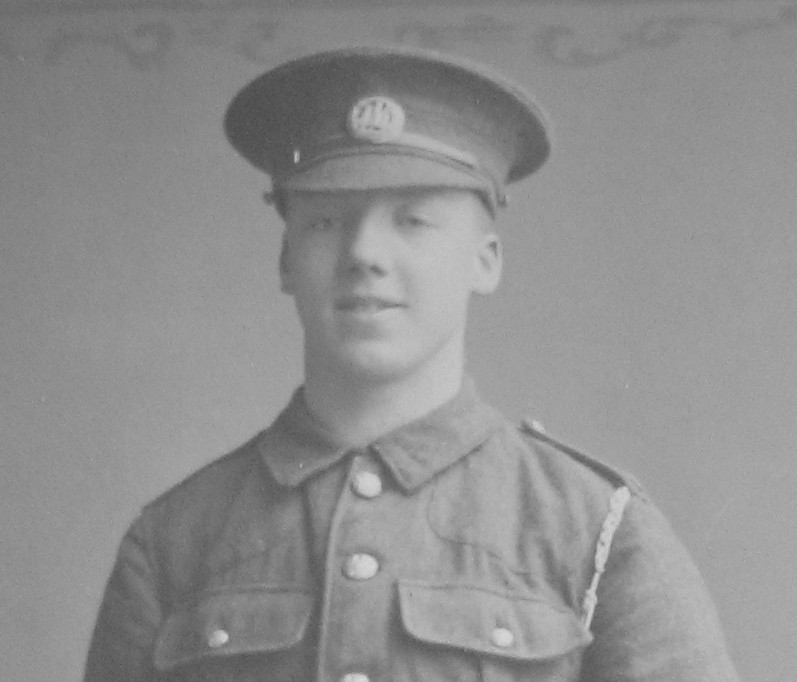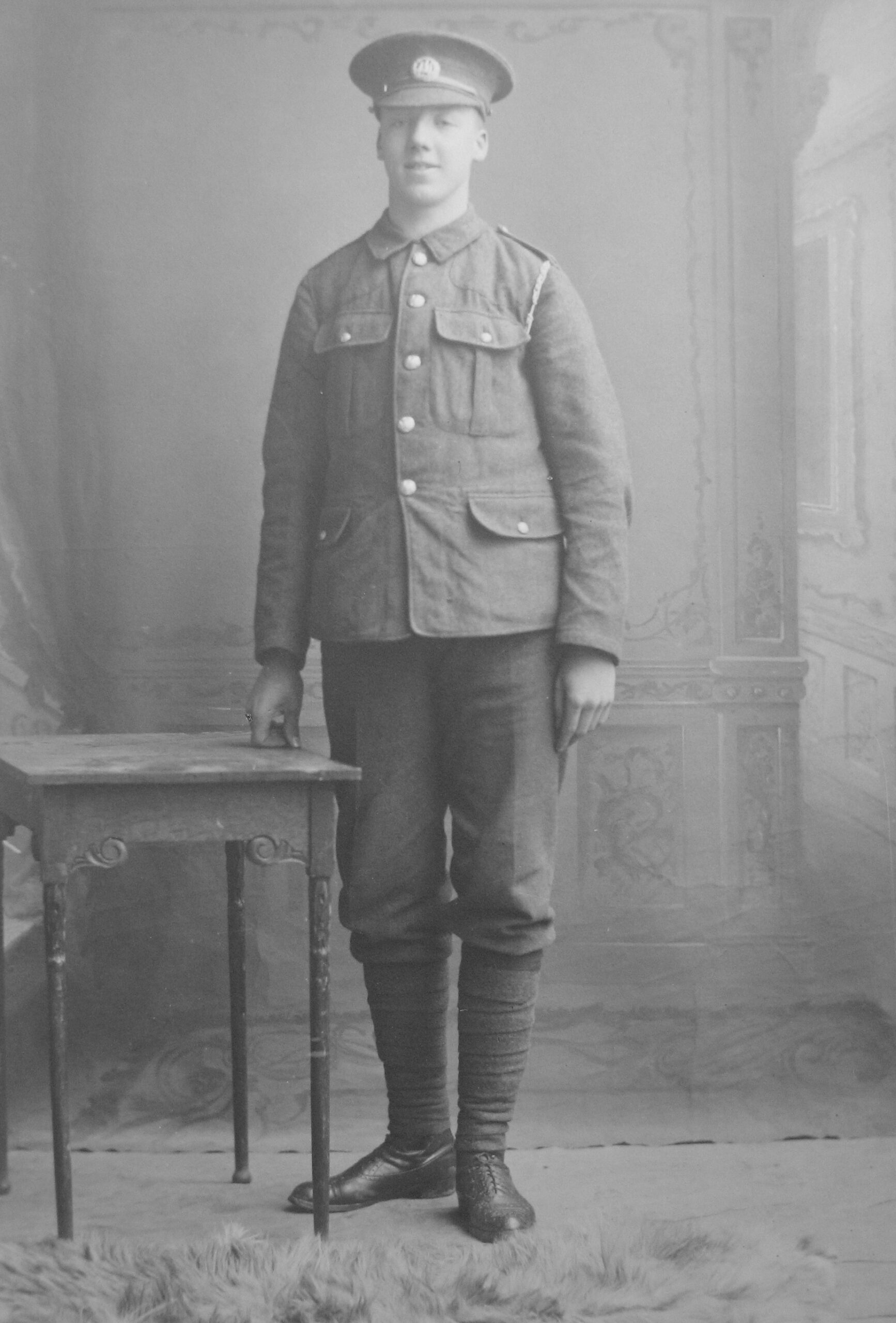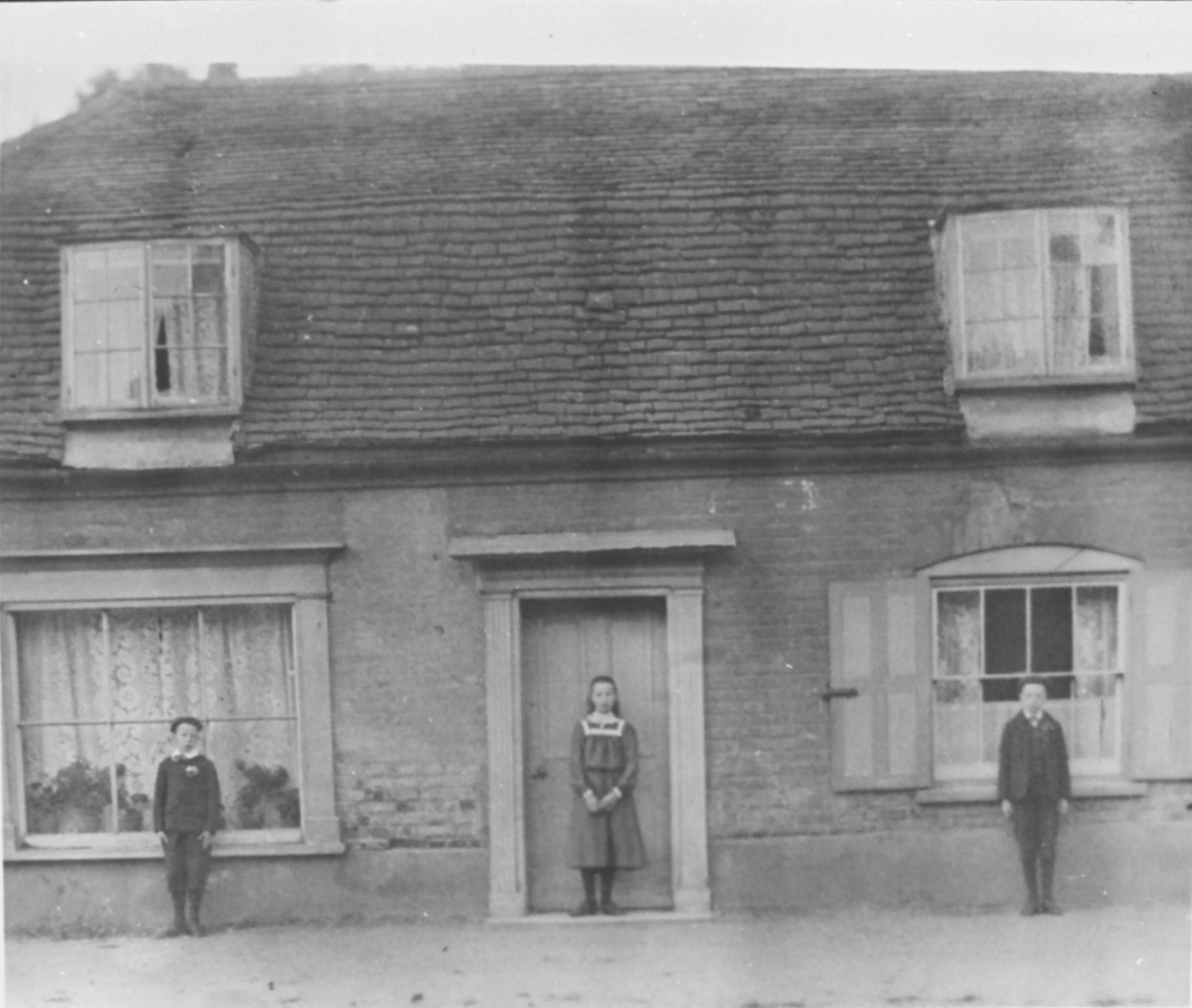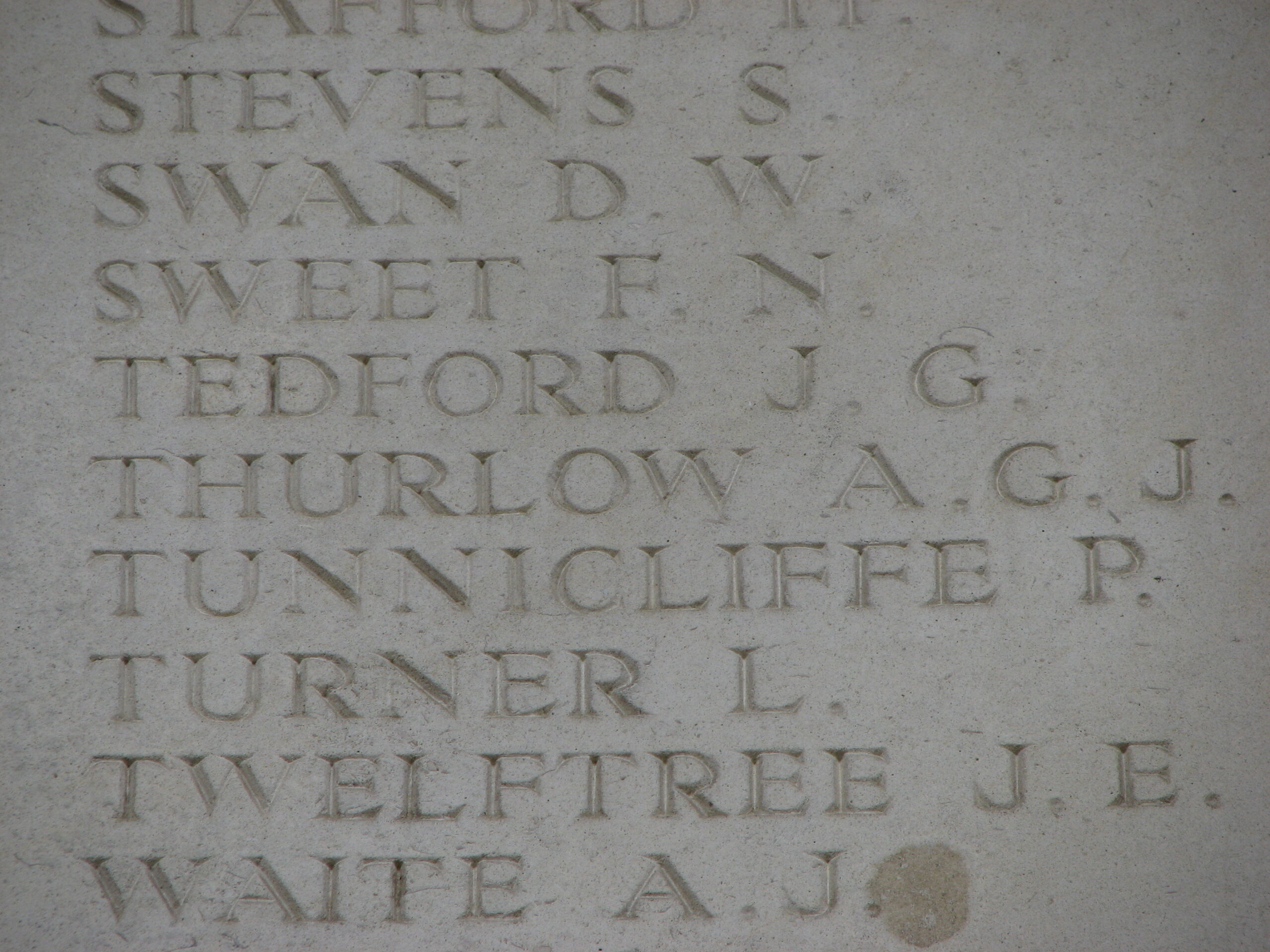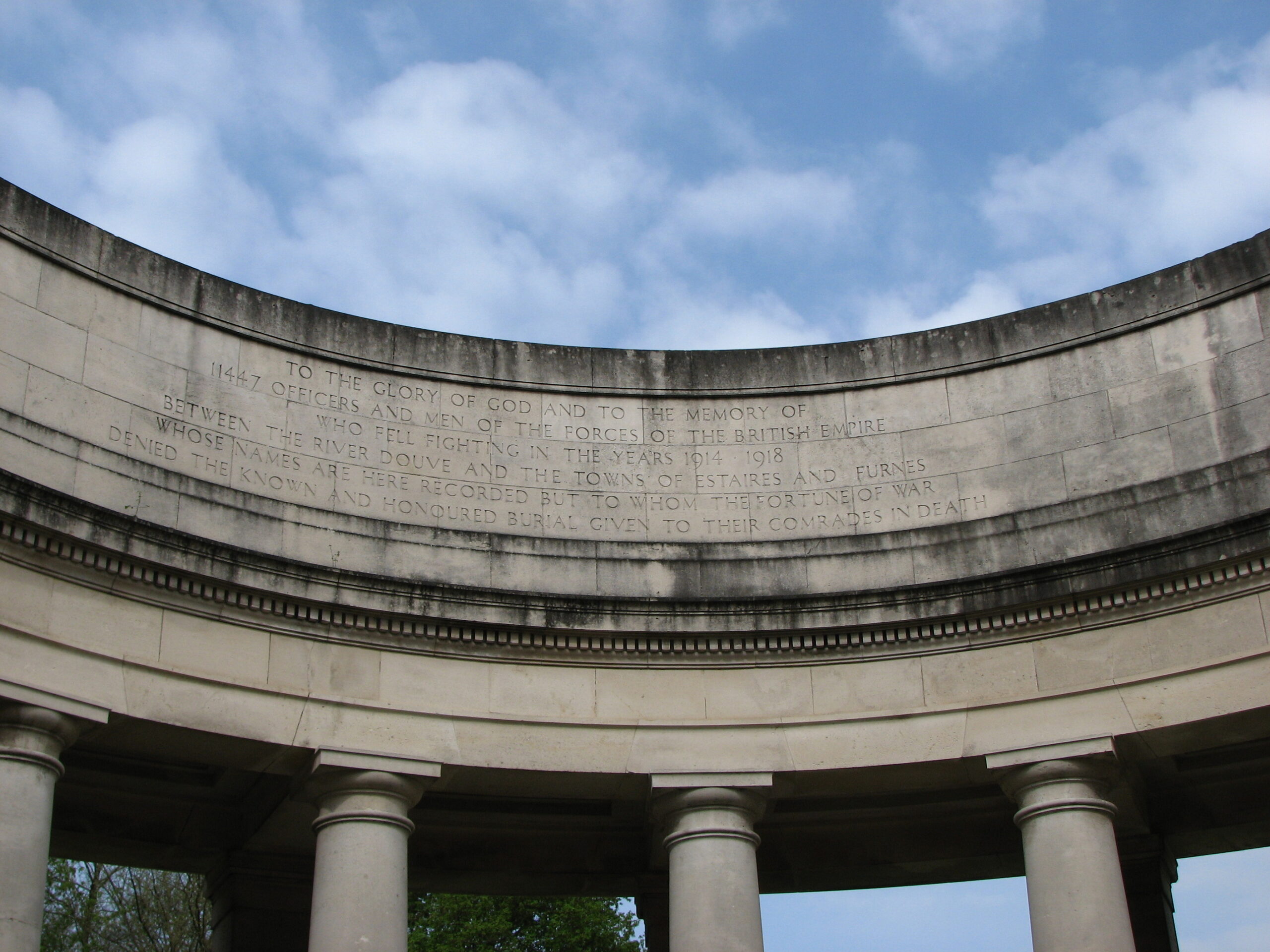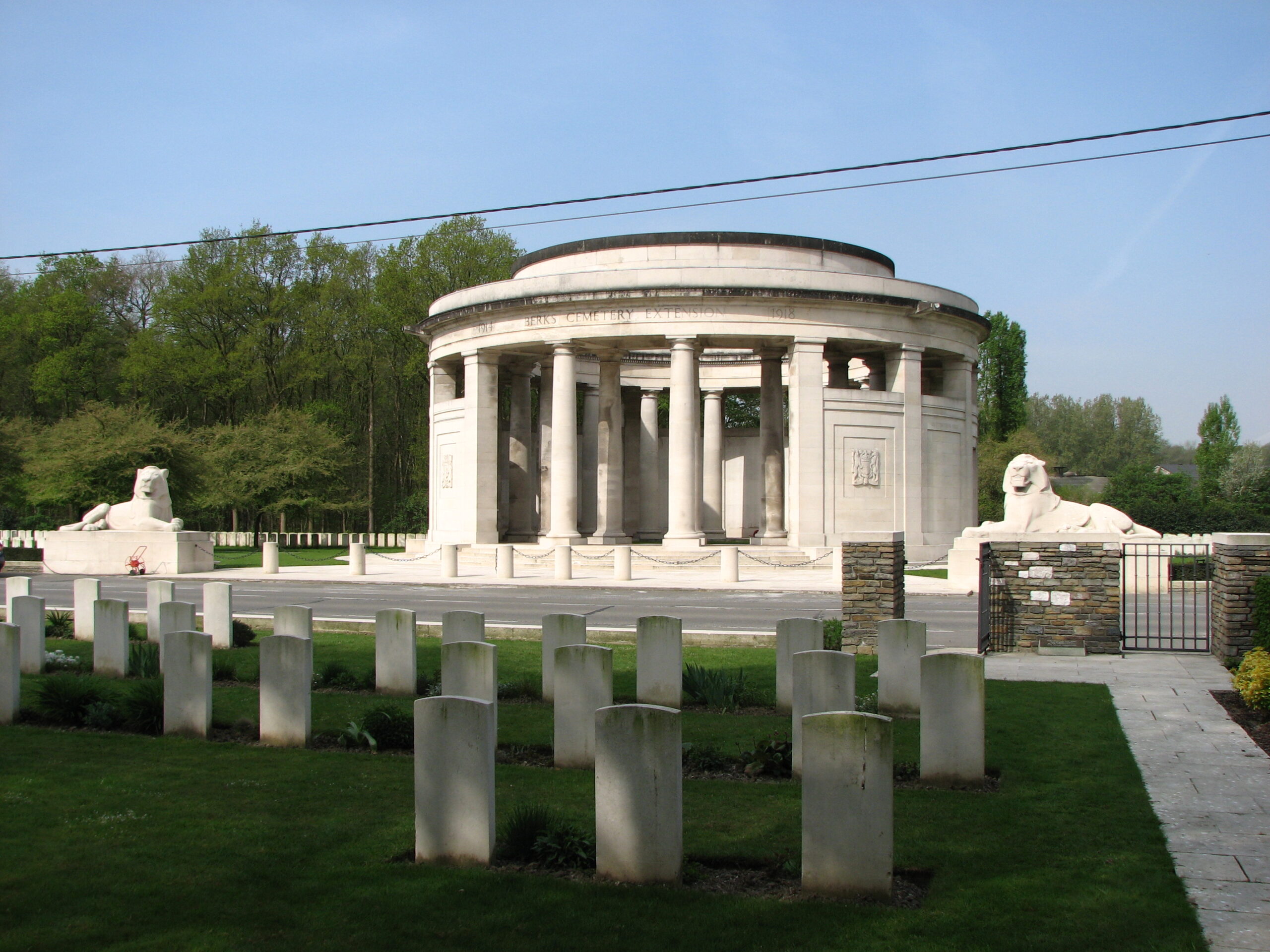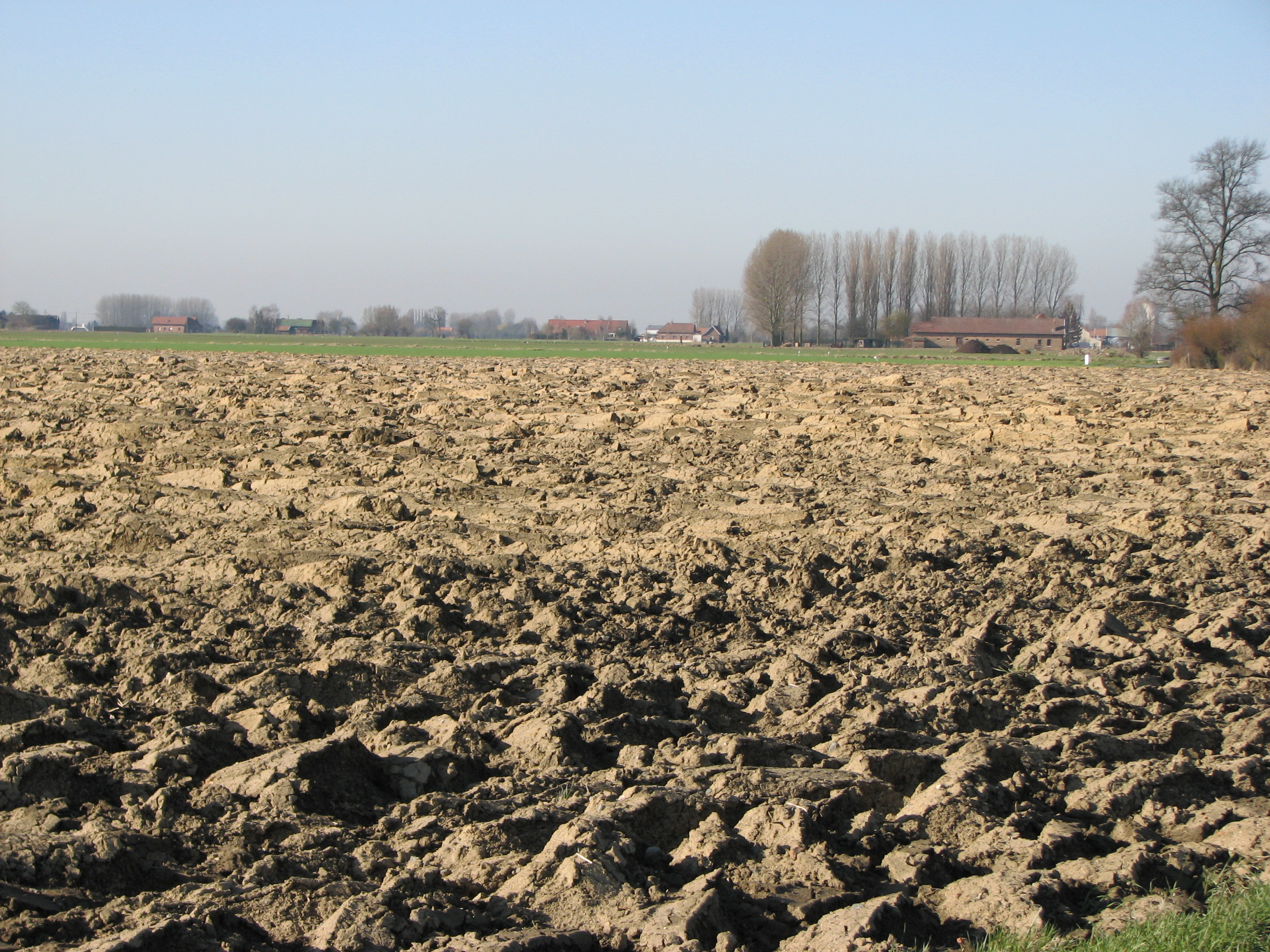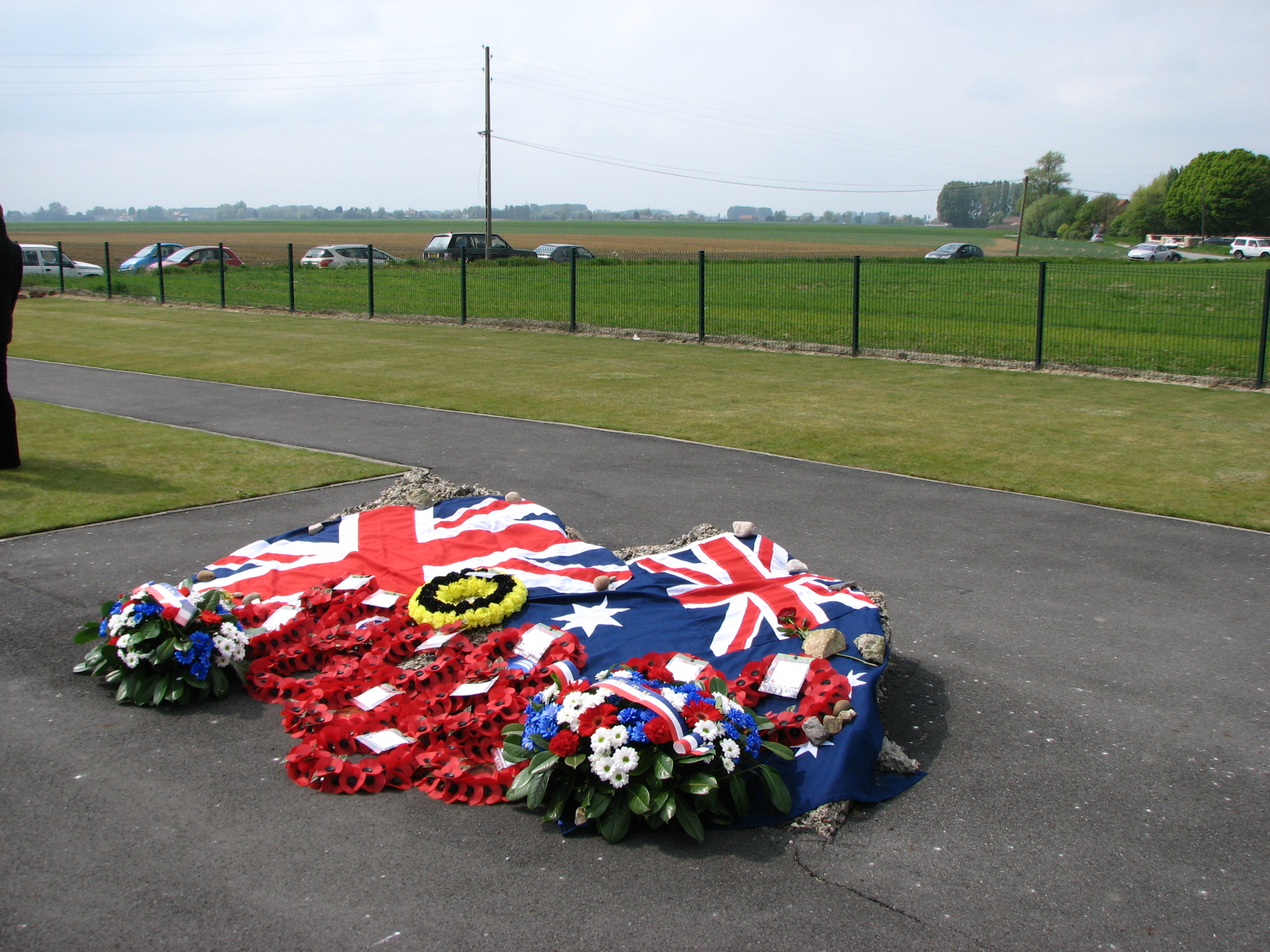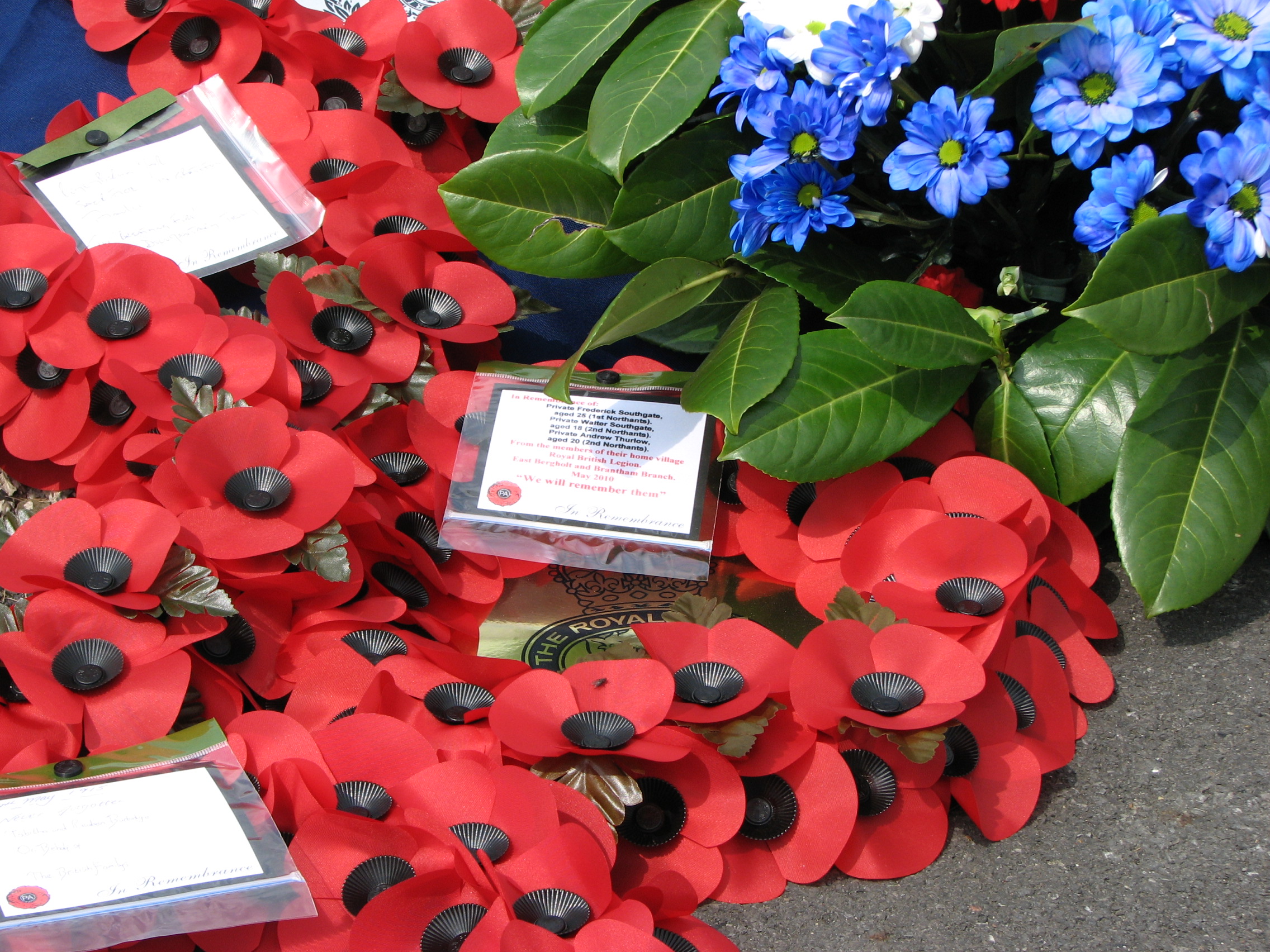Andrew Thurlow (1894 - 1915)
Andrew was one of four Bergholt men to join the Northamptonshire Regiment together, in August 1914. Three of the four men were all killed on the same day – the heaviest loss that East Bergholt would suffer on a single day, during the Great War.
- 62
- Died in the Great War
- 51.969114, 1.02274
Details
| Name: | Andrew George James Thurlow |
| Service: | British Army |
| Unit: | 2nd Battalion, Northamptonshire Regiment |
| Regimental Number: | 12582 |
| Rank: | Private |
| Date of Death: | 9th May 1915 |
| Age: | 20 |
| Commemorated: | Panel 7, Ploegsteert Memorial, near Ieper (Ypres), Belgium |
Family Background and Early Life
Andrew Thurlow was born at the Post Office at Cattawade, where his mother was the Post Mistress, on 22nd December 1894.
Andrew’s father, Henry Thurlow was originally from Barham, near Ipswich, and was employed as an Engine Driver (or operator) at the British Xylonite factory at Cattawade. In 1892, Henry had married Mary Anne Bird (nee Orman).
Mary Anne had been born at Ramsey, near Harwich, though she grew up in Manningtree before moving to East Bergholt. At the time of her marriage to Henry, Mary Anne was a widow, with three young boys, Osbert, Claude and Brice. 1 All three of Andrew’s half-brothers joined the Royal Navy, though they had all left before 1914. Two of them subsequently served in the Great War:
Osbert Bird was recalled from the Royal Fleet Reserve, upon the outbreak of War in August 1914. During the War, Osbert served on a number of ships including the armed-merchant cruiser HMS Ophir, and the pre-dreadnought battleship HMS Dominion. He survived the War and after he left the Navy, lived in Chatham. He died in 1963.
Brice Bird was invalided out of the Royal Navy in 1906. He joined the Northamptonshire Regiment in February 1916, but did not see overseas service. Brice lived in East Bergholt for most of his life and was the only one of the Bird/ Thurlow family to live in the village after 1919. He died in 1972 and is buried in the East Bergholt Cemetery.
All three of Brice’s sons served in the Second World War. Brice’s second son, Herman was killed in action on 27th March 1942, whilst serving with RAF Bomber Command, aged 22. He is commemorated on East Bergholt Memorial to those who died in the Second World War.
Henry and Mary Anne would have three children, a daughter who they called Ruby (born in 1893), Andrew and their youngest son, Leslie (born in 1896).
The Thurlow family moved to East Bergholt in January 1899, and set up home in Holly Cottage which used to stand opposite the King’s Head. Andrew had begun his schooling at Cattawade, but started at East Bergholt School situated at Burnt Oak Corner, shortly after the family moved to the village.
Andrew remained as a pupil at the School until June 1907. What he did immediately after leaving school is not known, but by late 1910 he was working at the British Xylonite factory in the Slicing department.
Joins the Army
On 27th August 1914 – just over three weeks after Great Britain declared war on Germany – Andrew, in the company of his brother Leslie, along with Walter Southgate with his brother Frederick, volunteered to join the Northamptonshire Regiment, at Colchester. 2 The exact nature of the relationship between the two Southgate brothers, and the Thurlow brothers can no longer be known for sure. However, it does seem certain that they were at least acquaintances of some years, and most likely friends: They were of similar ages, had attended the same school and had all lived in the Burnt Oak part of East Bergholt at the same time. In addition, Andrew, Leslie and Walter all worked in the Slicing Shop at the Factory.
The record of Andrew’s medical examination for the Army which took place at Colchester on 29th August 1914, states that he was 5 foot, 101/2 inches tall, weighing 144 pounds, with brown hair, brown eyes and a fresh complexion. Two days later he joined the 3rd Battalion of the Northamptonshire Regiment, with whom he would receive his basic training.
In October 1914, Andrew’s father died at the age of 59. Shortly afterwards, Andrew and Leslie were transferred to the Regiment’s 8th Battalion, who – like the 3rd – were based around Portland and Weymouth, in Dorset. Andrew was transferred back to the 3rd Battalion at the start of February 1915, approximately two months after Leslie had been.
It is not unreasonable to suppose that by joining the same regiment at the same time, the two pairs of brothers would have hoped to have all served together – in this they would have been disappointed. The first to be sent overseas was Frederick Southgate when – along with another Bergholt lad, Leonard Clark, from Manningtree Road – he was posted to join the 1st Battalion of the Northamptonshire Regiment in France, on 10th February 1915.
Two weeks later, Leslie Thurlow and Walter Southgate were posted to the Regiment’s 2nd Battalion: The 2nd was a Regular Army Battalion, which had arrived in France in November the previous year, having been in Alexandria, Egypt when war was declared.
Less than three weeks after joining the 2nd Battalion in France, Leslie Thurlow was wounded in the ankle during the Battle of Neuve Chapelle, and subsequently evacuated to England. 3 Leslie Thurlow later served in Egypt and Palestine. He survived the War and moved away from East Bergholt in 1919. Leslie died in Slough in 1964, at the age of 67.
France
Andrew was finally sent to France on 15th April 1915, and was posted to the Regiment’s 2nd Battalion, joining them four days later, as part of a reinforcement draft of 113 men. Andrew’s draft, was one of several sent to the Battalion, in order to make up their recent heavy losses at the Battle of Neuve Chapelle.
It is almost certain that after his arrival, Andrew would have met up with Walter Southgate, who was still serving with the 2nd Northamptons.
At the time that Andrew joined the Battalion, they were in billets at Bac-Saint-Maur, approximately 5 miles south-west of Armentieres. Two days after his arrival, the 2nd Battalion were inspected by the Commander-in-Chief of the B.E.F., Field Marshal Sir John French.
Over the next two weeks, the Battalion spent two 3 day periods manning the front line trenches approximately 5 miles south of Armentieres, between 24th and 27th April, and between 30th April and 3rd May, respectively.
On 3rd May 1915, the 2nd Northamptons were relieved by the 1st Sherwood Foresters, and went into billets, initially on the Rue Du Bois and then further back near Sailly where the remainder of the Brigade were also billeted.
Aubers Ridge – The Plan of Attack
In early May 1915, the British planned an attack to wrest control of the Aubers Ridge from the Germans and threaten the German supply lines. Though the Aubers Ridge is barely 20 metres in height, because of the flat, waterlogged nature of the ground surrounding it, this feature gave a tremendous advantage to the Germans who occupied it as they were able to overlook the British positions.
The British plan was for a two pronged attack: The 1500 yard wide Northern assault, consisted of troops from the 8th Division. The Southern prong of the attack started approximately 31/4 miles towards Bethune, on an assault front of 2400 yards, and was made up from troops of the 1st Division and the Meerut Division of the Indian Corps.
The 2nd Northamptons were to attack at the extreme right of the northern assault, at Rouges Bancs, near the village of Fromelles.
Originally planned to commence on 8th May 1915, the offensive was postponed by one day – the attacks due to commence just after dawn.
9th May 1915 – The Battle of Aubers Ridge
In order to disable the German defences which had been strengthened over recent weeks, a short 50 minute artillery bombardment was planned to cut the barbed wire immediately in front of the enemy front line and pound the trenches themselves.
The Battalion’s position from where they were going to attack was an orchard. The Germans knew something was going to happen, and as soon as it started to grow light on the morning of 9th May they started firing their machine guns at the breastworks of the British trenches. The artillery bombardment commenced at 5 a.m. and continued for 50 minutes.
Immediately the Battalion’s A and D companies left their trenches, they were subjected to heavy enfilade fire from German machine guns. They continued to push forward even though they were suffering heavy losses. A’ Company was practically wiped out, and only Lieutenant Parker and 30 men of D Company managed to reach the German trenches and establish themselves in parapet.
Of the Support companies, B Company similarly came under enfilade machine gun fire and were unable to reach the enemy’s trenches to assist D Company, or what was left of A Company. Neither was C Company able to advance much beyond the orchard, and it too suffered heavy losses.
Many men were stuck out in No Man’s Land and could not move back to the British trenches due to the heavy German fire. Several attempts were made to get into touch with the advance companies, but this proved impossible until a single runner managed to get through later in the day.
The remainder of the regiment stayed in the trenches which were heavily shelled for the remainder of that day, and the following night.
At dusk Lieutenant Parker and 14 men of D Company managed to return to the British trenches and brought with them 10 wounded men.
It was only with nightfall that the survivors of those who had been stuck out in No Man’s Land were able to get back to their trenches, and stretcher bearers to go out to bring in those wounded who could be reached.
The Aftermath and Human Cost
The attacks were a disaster for the British, largely because their artillery bombardment was insufficient for its purpose and had left the German defences intact: No ground was taken, and German artillery, rifle and machine gun fire inflicted heavy losses on the attackers. The British suffered more than 11,000 casualties on that one day, most before the attacking troops even got close to the German lines.
Before the action, the 2nd Battalion had numbered 20 officers and 867 other ranks. In that one day, 426 men of the Battalion became casualties: Of the Officers, 4 were killed, 5 wounded and 3 missing; the Other Ranks suffered 63 men killed, 154 wounded and 197 missing. Of those listed as Missing, most had in fact been killed.
Missing
Two of those who were listed as Missing were Andrew and Walter Southgate.
By a cruel coincidence, Walter’s elder brother Frederick was also Missing after the fighting on that day: His Battalion, the 1st Northamptons had formed the extreme right of the Southern prong of the attack. The losses suffered by the 1st Battalion were even heavier than those of the 2nd Battalion. 4 Frederick Southgate had in fact been killed on 9th May 1915. Frederick has no known grave and is commemorated on the Le Touret Memorial to the Missing, near Bethune, France.
In early June – one month after the Battle – the Army sent notification to Mary Anne informing her that Andrew was Missing.
It took the Army nearly 17 months to formally establish Andrew’s fate, and on 3rd October 1916, it wrote to Mary Anne to inform her that Private Andrew Thurlow had “died on or since 9th May 1915”. Just over one week later, Walter Southgate’s mother received a similar notice regarding his fate.
Postscript
Mary Anne Thurlow died at her daughter Ruby’s house in London in December 1918. Both Mary Anne and Henry Thurlow are buried in East Bergholt Cemetery, though their grave is unmarked.
Of the two pairs of brothers who had joined the Northamptonshire Regiment at Colchester on 27th August 1914, Andrew, Frederick Southgate and Walter Southgate were all killed in the attacks on 9th May 1915. Though we no longer have conclusive proof, it is almost certain that in those same attacks Leonard Clark was severely wounded, and lost his left leg. 5Leonard Clark survived the War, and after returning to his home village, he spent the rest of his working life as East Bergholt’s Shoemaker. He married and became a father and grandfather. Leonard would serve his country again in the Second World War, as a member of East Bergholt’s Home Guard Platoon. He died in 1965, at the age of 69 and is buried in East Bergholt Cemetery. It was the heaviest loss that East Bergholt would suffer on a single day, during the Great War.
Andrew has no known grave and is officially commemorated on Panel 7 of the Ploegsteert Memorial to the Missing, near Ieper (Ypres) in Belgium. Not far above Andrew’s name can be found that of Walter Southgate. 6 The Ploegsteert Memorial contains the names of more than 11,000 servicemen of the United Kingdom and South African forces who died in that sector of the Western Front during the Great War, and who have no known grave. It is located just over the border in Belgium, approximately 9 miles from where Andrew and Walter were killed.
The men killed in the Northern attack on Aubers Ridge who have no known grave, are amongst those commemorated on the Ploegsteert Memorial; those killed in the Southern attack who have no known grave, are amongst those commemorated on the Le Touret Memorial, near Bethune in France.
Acknowledgements
I am very grateful for the kind assistance given to me the late Mrs A. De’Ath, the daughter of Andrew’s half-brother, Brice.
Copyright © Mark Ashmore, 2024
- 62
- Died in the Great War
- 51.969114, 1.02274

